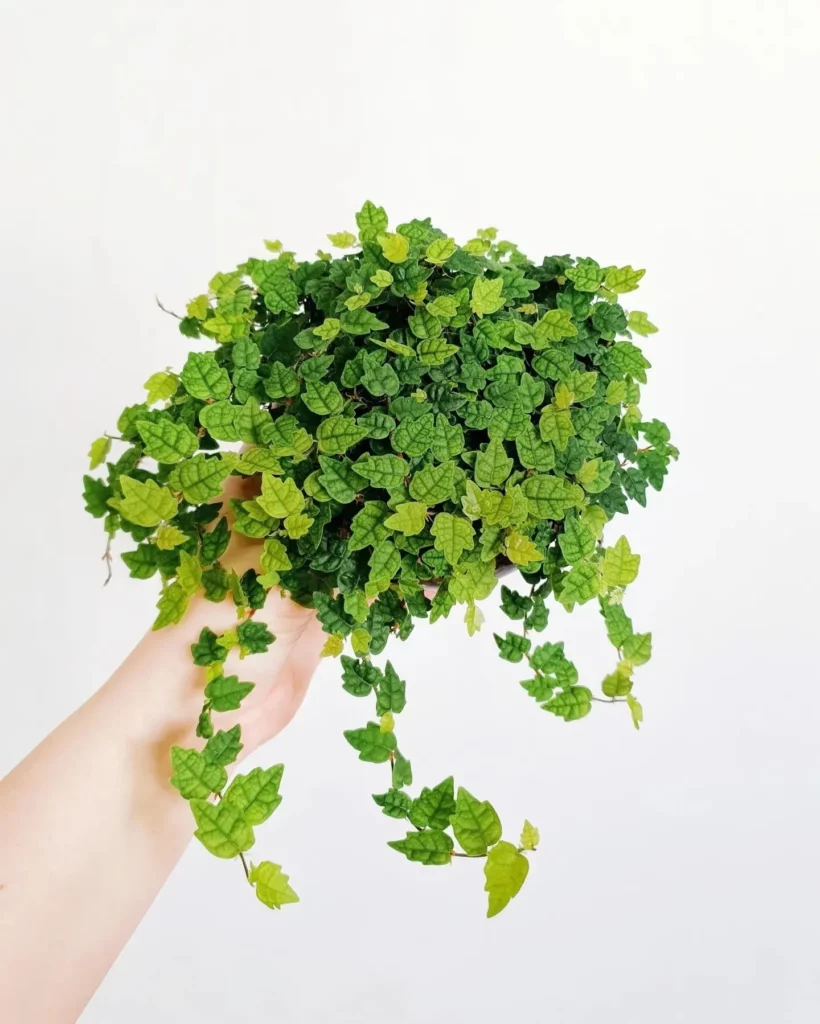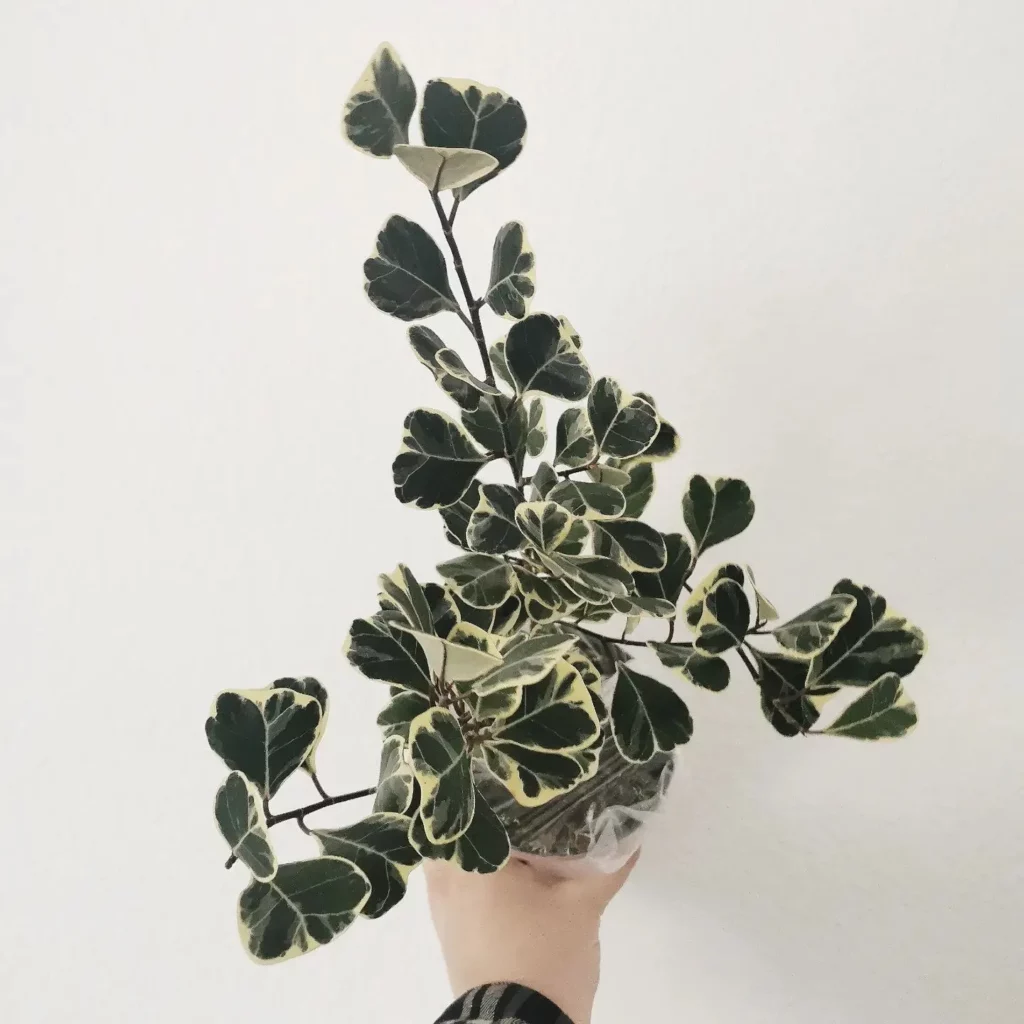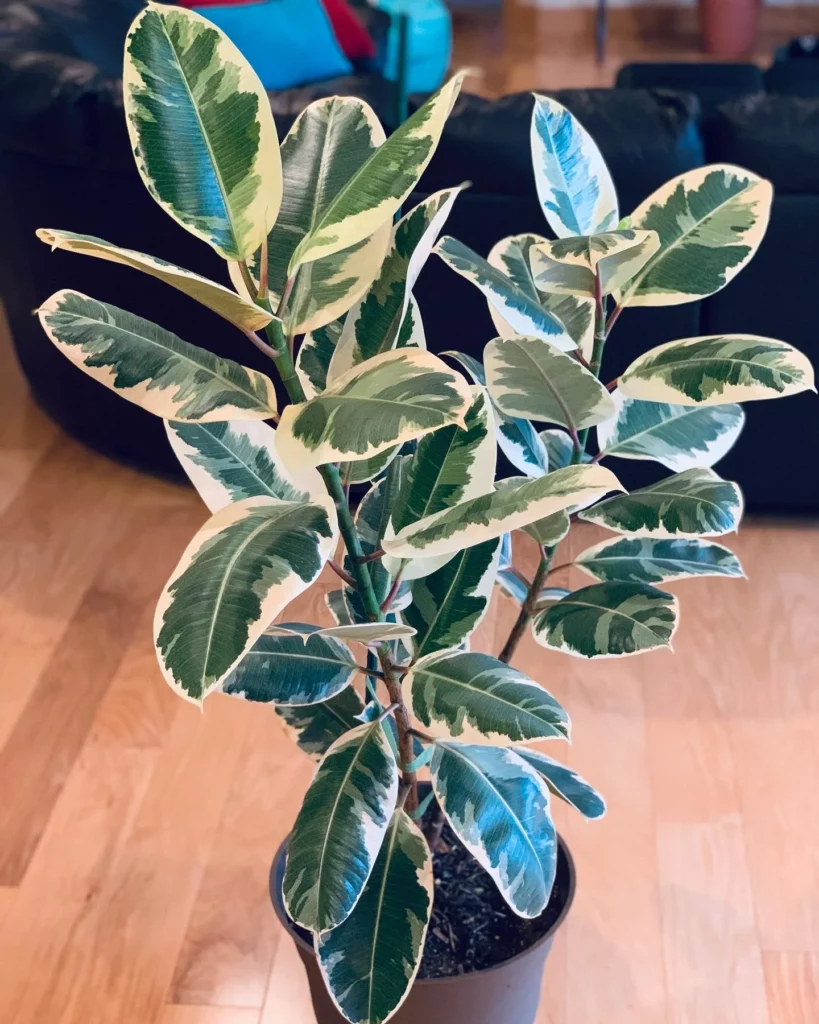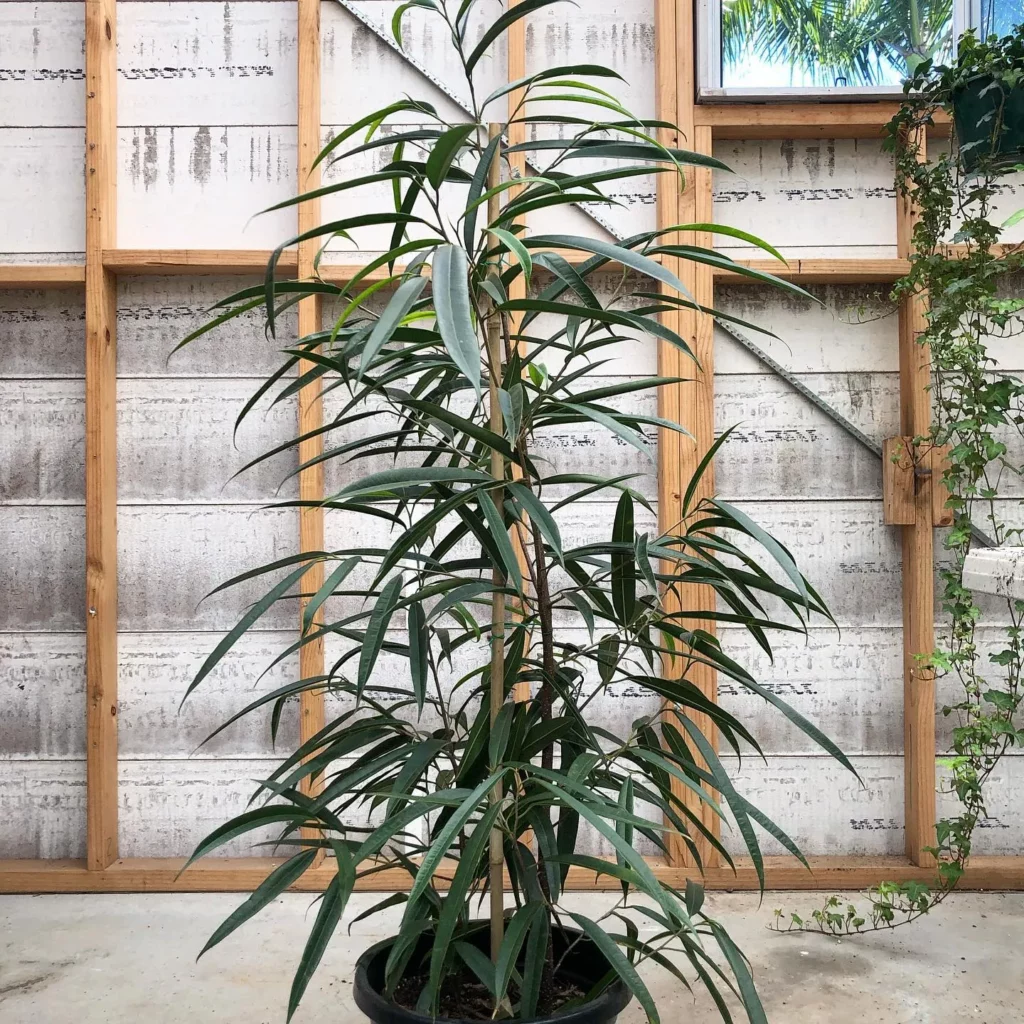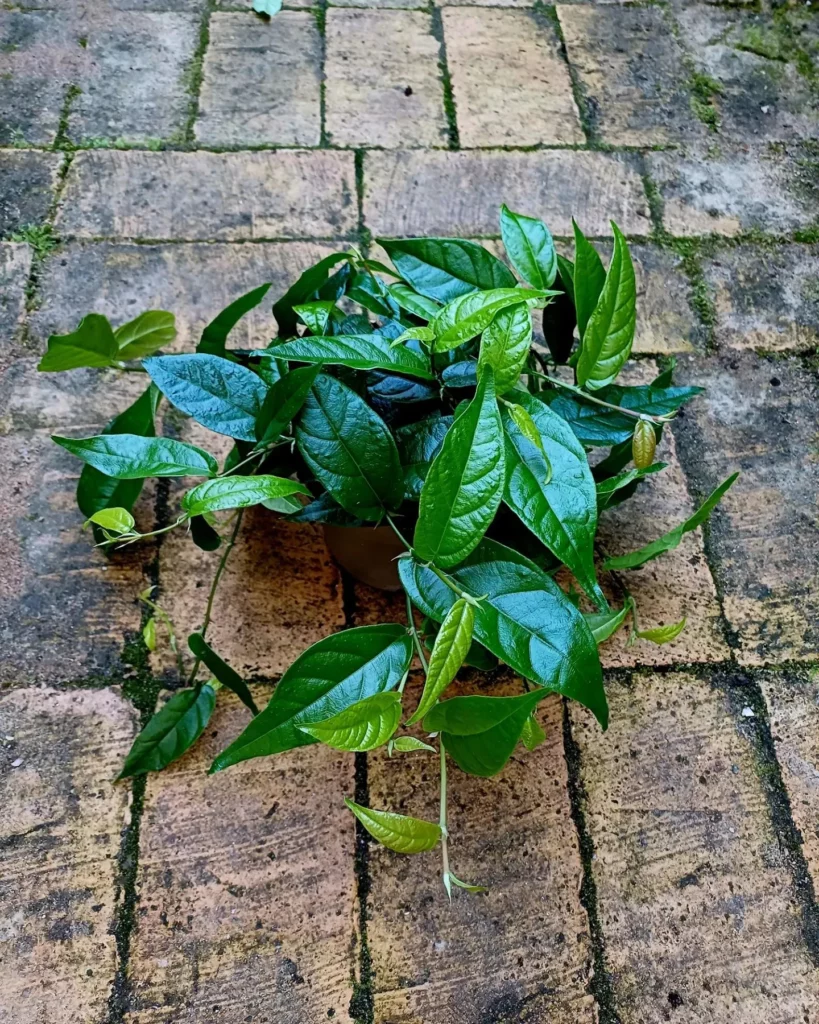Ficus pumila Quercifolia, also known as the Creeping Fig or String of Frogs, is a beautiful vine that adds a touch of natural beauty to any indoor or outdoor space.
This plant features small, heart-shaped leaves that resemble the shape of oak leaves. The foliage is typically a vibrant green color, but there are also variegated varieties available, which add a unique touch to your plant collection.
Appearance of Ficus pumila Quercifolia
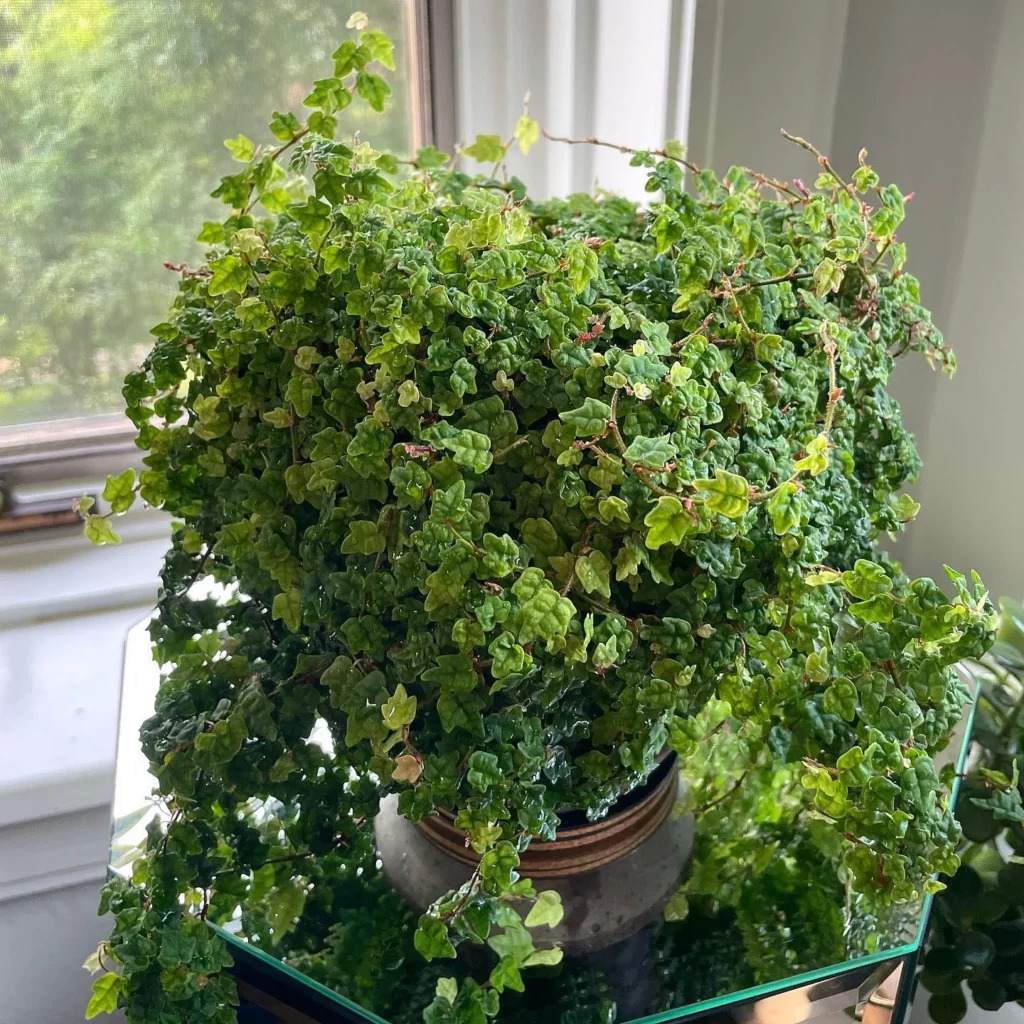
Whether you choose to grow Ficus pumila Quercifolia in a hanging basket or use it as a ground cover, its lush foliage will create an eye-catching display.
The heart-shaped leaves cascade down, creating a cascading effect that is visually appealing. This plant is perfect for those looking to add a touch of greenery to their living space or garden.
Ficus pumila Quercifolia, also known as the Creeping Fig or String of Frogs, is a beautiful vine that adds a touch of natural beauty to any indoor or outdoor space. This plant features small, heart-shaped leaves that resemble the shape of oak leaves.
The foliage is typically a vibrant green color, but there are also variegated varieties available, which add a unique touch to your plant collection.
How to Grow Ficus pumila Quercifolia

Growing Ficus pumila Quercifolia, also known as the Creeping Fig or String of Frogs, is a rewarding experience for plant enthusiasts of all levels. Here are some key steps to successfully care for this beautiful vine:
- Choose the right location: Ficus pumila Quercifolia thrives in bright, indirect light. Place it in an area that receives 4-6 hours of dappled sunlight each day. If growing indoors, position it near a north or east-facing window to ensure it gets enough light.
- Use well-draining soil: Plant your Ficus pumila Quercifolia in a pot with a well-draining potting mix. A mix of peat moss, perlite, and vermiculite works well. This prevents waterlogging, which can lead to root rot.
- Water properly: Water your Ficus pumila Quercifolia when the top inch of soil feels dry to the touch. Water thoroughly until water drains out of the bottom of the pot, then empty any excess water from the saucer to avoid waterlogged roots.
- Maintain temperature: Ficus pumila Quercifolia prefers temperatures between 55-75°F (13-24°C). Avoid placing it near drafts or in extreme temperature conditions.
- Prune regularly: Trim back any overgrown or dead foliage to maintain the desired shape and size of your Ficus pumila Quercifolia. Regular pruning also encourages new growth and helps control its spread.
Propagation Tips for Ficus pumila Quercifolia

Ficus pumila quercifolia, also known as the Creeping Fig or String of Frogs, is a versatile plant that can be easily propagated through stem cuttings. Here are some helpful tips and techniques to successfully propagate your Ficus pumila quercifolia:
- Start by selecting a healthy, well-established plant with strong stems.
- Using a sharp and clean pair of pruning shears, take a 5-6 inch stem cutting from the plant just below a leaf node. Make sure the cutting has at least two sets of leaves.
- Remove the lower leaves from the cutting, leaving only the top two sets of leaves intact.
- Dip the cut end of the stem cutting into a rooting hormone to promote root development.
- Plant the cutting in a well-draining potting mix, ensuring that at least one node is buried in the soil.
- Place the potted cutting in a warm and humid environment, such as a greenhouse or a covered area outdoors.
- Water the cutting regularly, keeping the soil moist but not waterlogged.
- After a few weeks, the cutting should develop roots. You can gently tug on the stem to check if it has anchored itself in the soil.
- Once the cutting has established roots, you can transplant it into a larger pot or directly into the ground in your desired location.
Quick Care Overview for Ficus pumila Quercifolia
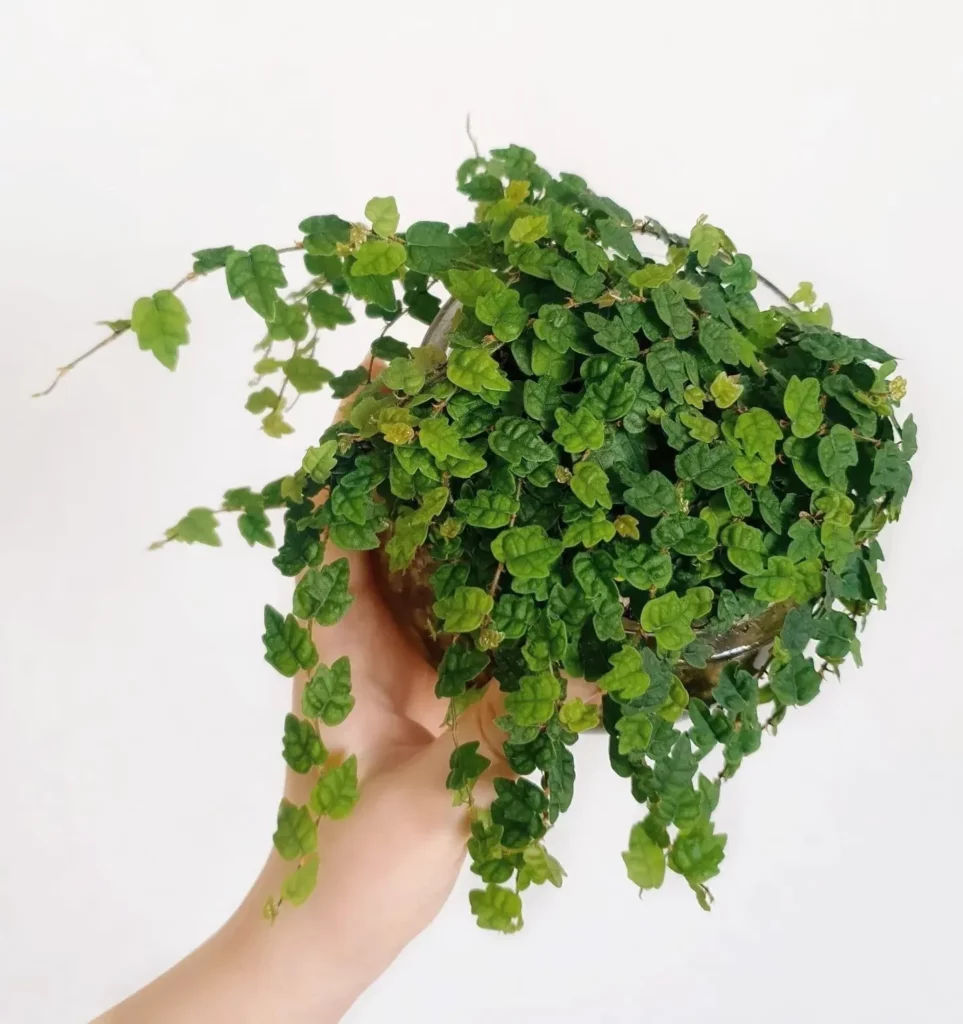
In this section, I will provide you with essential care tips to ensure your Ficus pumila Quercifolia, also known as the Creeping Fig or String of Frogs, thrives in your home or garden. It’s a low-maintenance vine that adds a touch of natural beauty to any space.
Here are some key care essentials:
- Light: Ficus pumila Quercifolia prefers dappled sunlight for about 4-6 hours a day. Place it near a window with filtered light or provide shade if placed outdoors.
- Soil: Use a well-draining potting mix with a neutral pH for optimal growth. Avoid waterlogged soil to prevent root rot.
- Watering: Water the plant when the top inch of soil is dry. Avoid overwatering, as it can lead to root rot. Ensure proper drainage to prevent standing water.
- Temperature: Ficus pumila Quercifolia thrives in temperatures between 55-75°F (12-24°C). Avoid extreme temperature fluctuations.
- Pest Control: Monitor your plant for common pests like spider mites and scales. Use insecticidal soap or natural remedies to control and prevent infestations.
- Pruning: Regular pruning helps control the spread of the vine and promotes healthier growth. Remove any dead or damaged foliage to maintain the plant’s appearance.
Soil Requirements for Ficus pumila Quercifolia
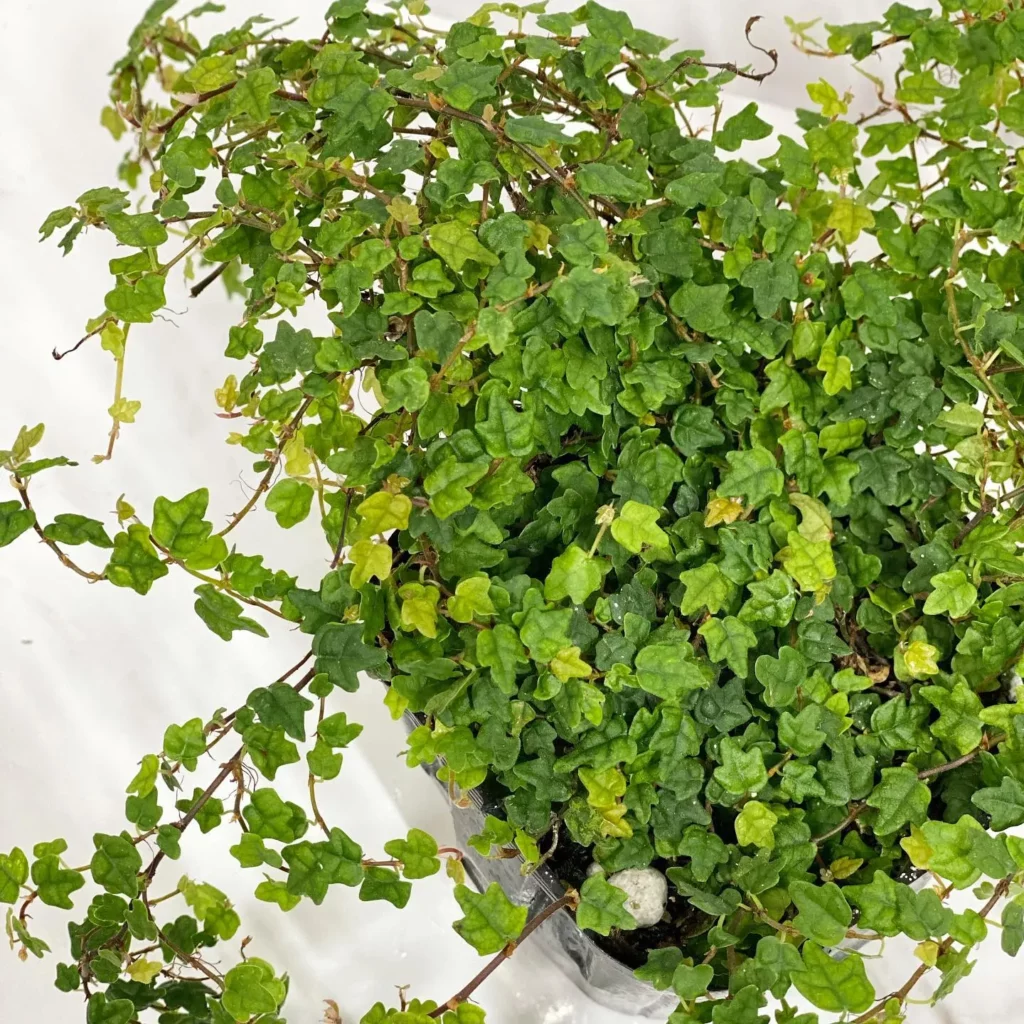
When it comes to the soil requirements for your Ficus pumila Quercifolia plant, it’s important to create the ideal growing environment. This creeping vine thrives in well-draining soil that retains moisture without becoming waterlogged.
A neutral pH soil mix is recommended to provide optimal conditions for root development and nutrient absorption. To achieve this, you can create a suitable soil mix by combining equal parts of peat moss, perlite, and potting soil.
It’s also essential to consider the container drainage. Ensure that your pot has drainage holes at the bottom to prevent water saturation, which can lead to root rot and other issues.
To further improve drainage, you can place a layer of small rocks or broken pottery shards at the bottom of the pot before filling it with the soil mix.
| Soil Requirement | Details |
|---|---|
| Drainage | Well-draining soil to prevent water saturation and root rot. |
| pH Level | Neutral pH soil mix (around 6.0-7.0) for optimal growth and nutrient absorption. |
| Soil Mix | Equal parts of peat moss, perlite, and potting soil for a well-balanced composition. |
Potting and Repotting Ficus pumila Quercifolia
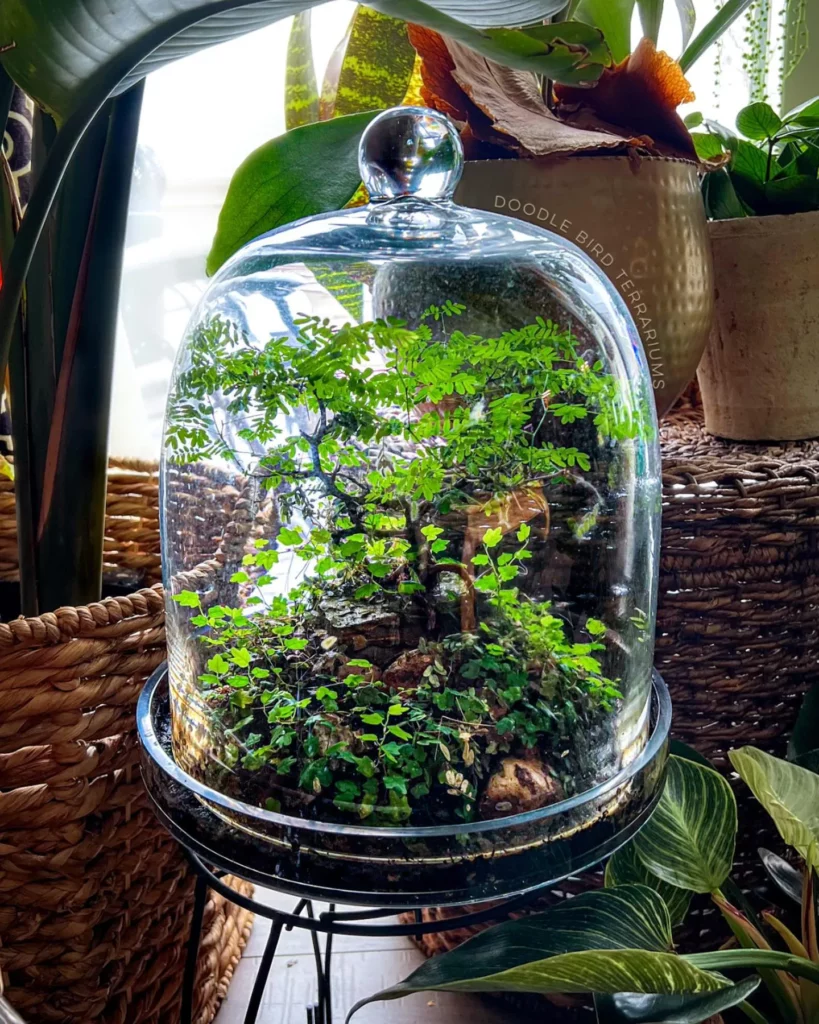
Proper potting and repotting techniques are crucial for the long-term health and growth of your Ficus pumila Quercifolia, also known as the Creeping Fig or String of Frogs.
When potting your plant, it is essential to select a pot that provides adequate drainage to prevent waterlogging. A well-draining potting mix is recommended, which consists of equal parts peat moss, perlite, and potting soil. This will ensure proper root aeration and prevent the risk of root rot.
Repotting is necessary when your Ficus pumila Quercifolia has outgrown its current pot or if you notice signs of root congestion, such as roots growing out of the drainage holes. It’s best to repot during the spring season, as the plant is actively growing and can quickly recover from the transition.
While repotting, gently loosen the root ball and place the plant in a new pot that is one size bigger than the previous one. Fill the gaps with fresh potting mix, making sure not to bury the stem too deeply.
After repotting, water the plant thoroughly to help settle the new soil around the roots. Maintain regular watering and observe the plant’s growth to determine if it requires repotting again in the future.
Pruning and Shaping Ficus pumila Quercifolia
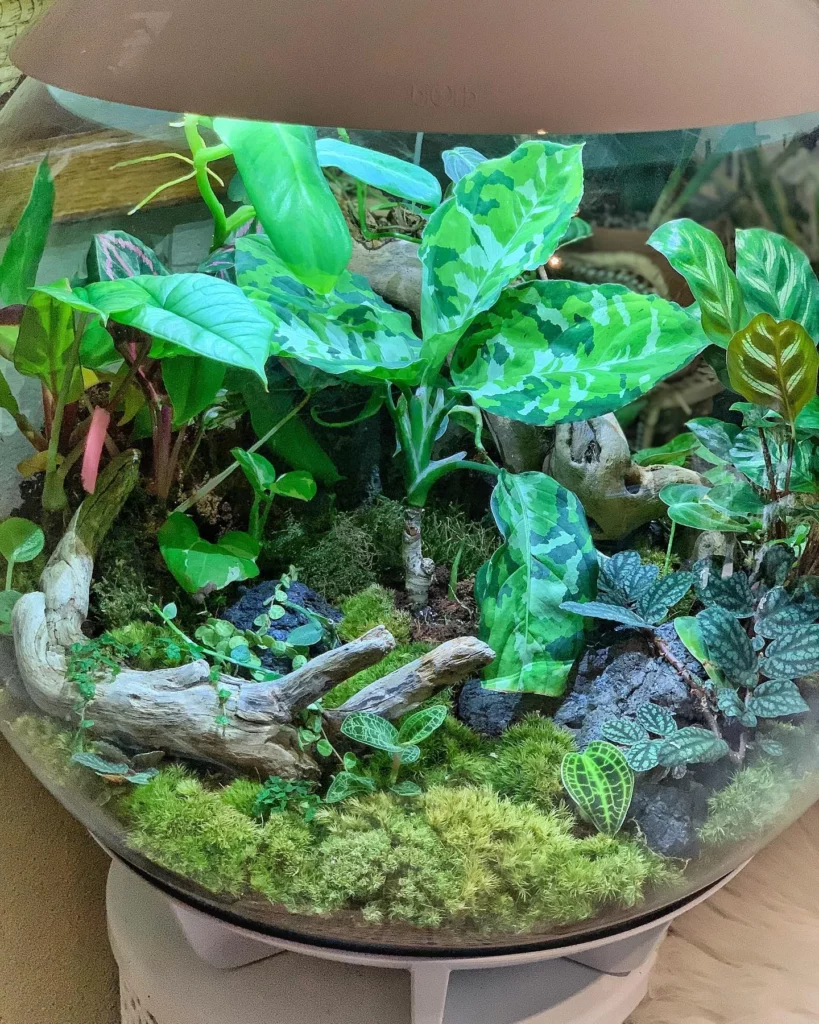
Pruning is an essential aspect of caring for Ficus pumila Quercifolia, allowing you to maintain the desired shape and size of the plant. Regular pruning helps control its spread and remove any dead or damaged foliage, promoting healthier growth and a more aesthetically pleasing appearance.
When pruning your Ficus pumila Quercifolia, start by inspecting the plant for any dead or diseased leaves. Use sharp pruning shears to carefully remove these foliage, cutting just above a leaf node or where the stem meets the main vine.
If you wish to shape your Creeping Fig plant, prune the vines to encourage bushier growth or guide them along a trellis or wire support. You can also trim back any excessively long or unruly branches to maintain a more compact and tidy appearance.
Temperature Requirements for Ficus pumila Quercifolia
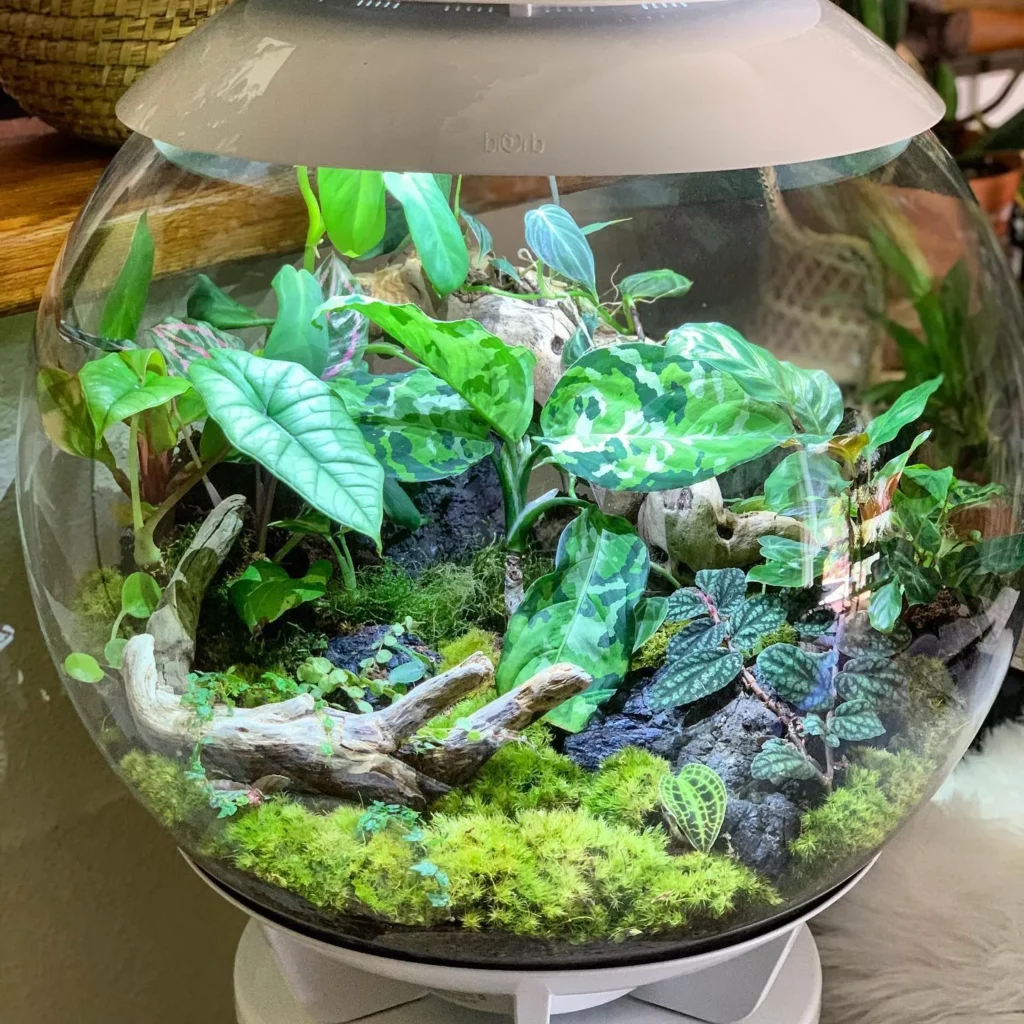
Ficus pumila quercifolia, commonly known as Creeping Fig or String of Frogs, has specific temperature requirements to ensure its optimal growth and health. Understanding these temperature preferences is essential to provide the ideal environment for your plant.
These plants thrive in temperatures between 55 and 75°F, making them suitable for indoor cultivation. They can tolerate slightly lower temperatures during winter but may suffer damage if exposed to frost. It’s important to keep them away from drafty areas or cold windows during colder months.
On the other hand, Ficus pumila quercifolia can also tolerate higher temperatures, but above 85°F, they may experience stress and heat damage.
It’s advisable to provide some shade or protect them from direct sunlight during scorching summers to prevent leaf scorching or drying.
Humidity Requirements for Ficus pumila Quercifolia

Ficus pumila Quercifolia, also known as the Creeping Fig or String of Frogs, thrives in environments with moderate to high humidity levels. Providing the right amount of humidity is crucial for the health and growth of this plant.
Here are some tips to help you maintain the ideal humidity for your Ficus pumila Quercifolia:
- Place a tray of water near the plant or use a humidifier to increase the humidity levels. This is especially important if you live in a dry climate or during the winter months when indoor air tends to be drier.
- Mist the leaves of your Ficus pumila Quercifolia regularly with water to create a humid microclimate around the plant. This will help prevent the leaves from drying out and keep them looking lush and green.
- Avoid placing your plant near heating or cooling vents, as the dry air from these sources can decrease humidity levels and negatively impact the health of your Ficus pumila Quercifolia.
Monitoring Humidity Levels
To ensure the optimal humidity for your Ficus pumila Quercifolia, you can use a hygrometer to measure the humidity levels in the air around the plant. Aim for a humidity range between 50% and 70%, as this is generally favorable for the plant’s growth and overall well-being.
| Humidity Level | Action |
|---|---|
| Below 50% | If the humidity levels are consistently below 50%, increase humidity by misting, using a humidifier, or placing the plant on a tray of water. |
| Above 70% | If the humidity levels are consistently above 70%, decrease humidity by ensuring proper ventilation and allowing the soil to dry slightly between waterings. |
Fertilizing Ficus pumila Quercifolia
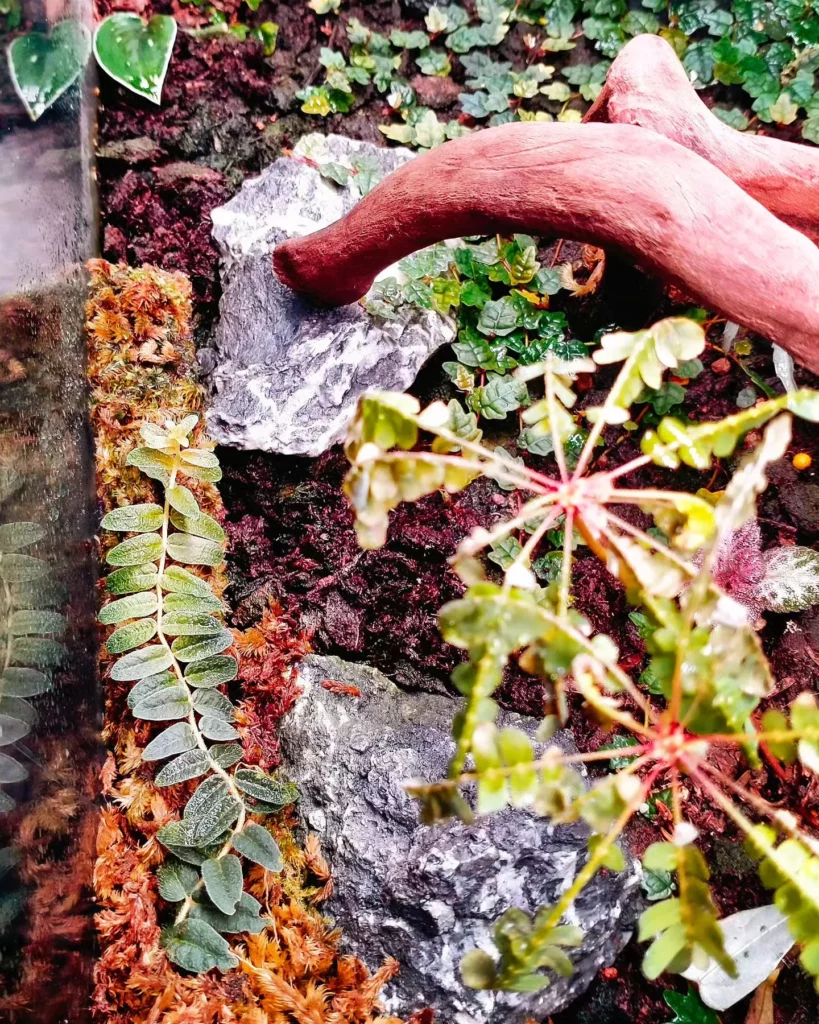
Fertilizing your Ficus pumila Quercifolia plant is an essential part of its care routine. Providing the right nutrients will help promote healthy growth and vibrant foliage. Here are some important considerations when it comes to fertilizing this plant:
- Choose a balanced, water-soluble fertilizer that is specifically formulated for houseplants.
- Follow the manufacturer’s instructions for dilution and application rates.
- During the active growing season, fertilize your Ficus pumila Quercifolia once a month.
- Avoid over-fertilizing, as this can lead to salt buildup in the soil, which can damage the roots. If you notice any signs of fertilizer burn, such as brown or wilting leaves, flush the soil with water to remove excess salts.
- Alternatively, you can use a slow-release fertilizer applied according to the package instructions. This will provide a steady supply of nutrients over a longer period of time.
Pest Control for Ficus pumila Quercifolia
When caring for your Ficus pumila Quercifolia, it is important to be aware of common pests that can affect its health. Spider mites and scales are among the most common pests that can infest this plant.
Spider mites are tiny bugs that can cause discoloration and leave webbing on the foliage, while scales are small insects that feed on the sap of the plant, leading to yellowing and wilting leaves.
To effectively control these pests, it is recommended to regularly inspect your Ficus pumila Quercifolia for any signs of infestation. If you spot spider mites or scales, isolate the affected plant from other plants to prevent the infestation from spreading.
You can use a mild solution of soap and water to wash the leaves, making sure to reach the undersides where the pests tend to hide. Alternatively, you can use a horticultural oil or insecticidal soap specifically formulated for houseplants to get rid of the pests.
Preventing Pest Infestations
While it is important to take immediate action if you notice signs of pest infestation, prevention is always better than cure. Here are some tips to help prevent pests from attacking your Ficus pumila Quercifolia:
- Regularly inspect your plant for any signs of pests, such as webbing, discoloration, or wilting leaves.
- Keep your plant healthy by providing it with the right amount of light, water, and nutrients.
- Avoid overwatering, as excess moisture can create a conducive environment for pests.
- Ensure good air circulation around the plant by keeping it away from crowded spaces.
- Regularly clean the leaves of your Ficus pumila Quercifolia to remove dust and prevent the buildup of pests.
Common Problems with Ficus pumila Quercifolia
While Ficus pumila Quercifolia is generally a resilient and easy-to-care-for plant, it can still encounter some common problems. Understanding and addressing these issues promptly will help ensure the continued health and vitality of your Creeping Fig.
1. Yellowing Leaves: One common problem with Ficus pumila Quercifolia is the yellowing of leaves. This can be caused by overwatering, underwatering, or inadequate light.
Check the soil moisture level and adjust your watering accordingly. Ensure that the plant receives enough light, as it needs dappled sunlight to thrive.
2. Leaf Drop: Another common issue with Ficus pumila Quercifolia is leaf drop. This can occur due to changes in temperature, insufficient humidity, or pests.
Maintain a stable temperature range between 55-75°F and provide the plant with adequate humidity by misting its leaves or using a humidifier. Regularly inspect the plant for signs of pests such as spider mites or scales and take appropriate measures to control them.
3. Fungal Infections: Ficus pumila Quercifolia is susceptible to fungal infections, especially if the plant is overwatered or if there is poor air circulation around it. To prevent fungal issues, ensure that the soil is well-draining and avoid overwatering.
If a fungal infection occurs, remove the affected parts immediately and treat the plant with a fungicide if necessary.
Conclusion
To grow Ficus pumila quercifolia successfully, it is important to provide it with the right amount of light and maintain optimal temperature and humidity levels.
Additionally, using a well-draining potting mix and watering the plant when the top soil is dry will ensure its health and vitality.
While caring for your Ficus pumila quercifolia, pay attention to any potential pests such as spider mites or scales and take the necessary steps to control them. Regular pruning will help maintain the desired shape and control the spread of the vine.
Make sure to check out our article on Ficus pumila Variegata Care Guide. And after reading that Ficus article, check out our article on Ficus radicans Care Guide.
FAQ
Q: How do I propagate Ficus pumila Quercifolia?
A: To propagate Ficus pumila Quercifolia, take a 5-6 inch stem cutting and plant it in a well-draining potting mix.
Q: What light conditions does Ficus pumila Quercifolia prefer?
A: Ficus pumila Quercifolia prefers 4-6 hours of dappled sunlight.
Q: How often should I water Ficus pumila Quercifolia?
A: Water the plant when the top soil is dry.
Q: How do I control pests on Ficus pumila Quercifolia?
A: Use insecticidal soap to keep pests like spider mites and scales at bay.
Q: How do I prune Ficus pumila Quercifolia?
A: Prune the plant to control its spread and remove any dead or damaged foliage.
Q: Can Ficus pumila Quercifolia be grown as a ground cover?
A: Yes, Ficus pumila Quercifolia can be grown as a ground cover.
Q: Can Ficus pumila Quercifolia be grown in hanging baskets?
A: Yes, Ficus pumila Quercifolia can be grown in hanging baskets.
Q: What is the temperature range for Ficus pumila Quercifolia?
A: Maintain a temperature between 55-75°F for Ficus pumila Quercifolia.
Q: How can I prevent common problems with Ficus pumila Quercifolia?
A: Follow the care guidelines provided and address any issues promptly to prevent common problems.

